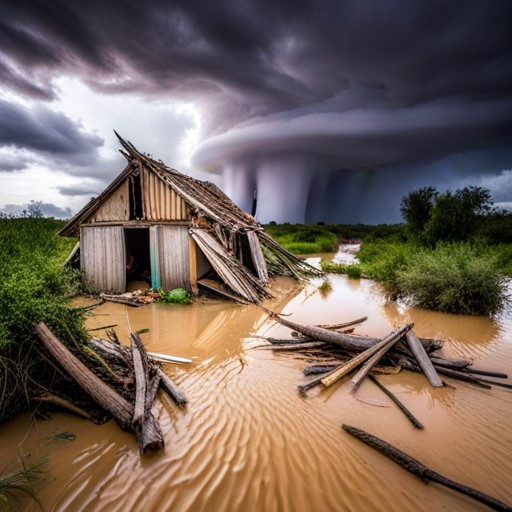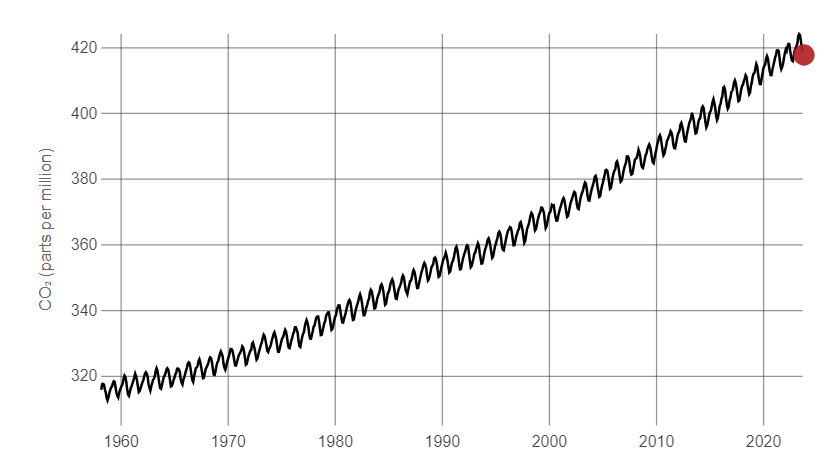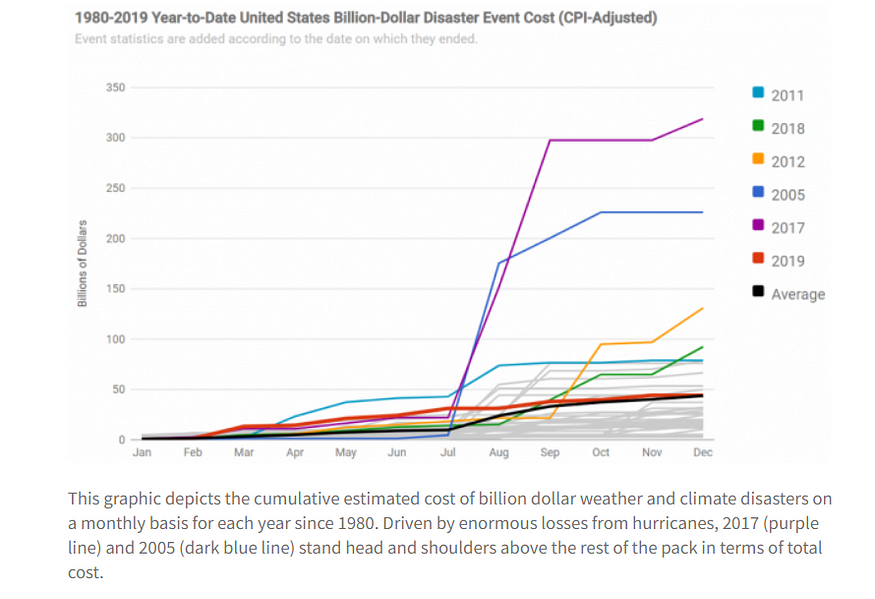
Artificial Intelligence & Climate Change
Last Updated on December 11, 2023 by Editorial Team
Author(s): Claudio Giorgio Giancaterino
Originally published on Towards AI.

Many times, we watch, listen to, and read weather episodes from magazines and news that are automatically linked to climate change, but not all events are related to this phenomenon. For instance, a weather event like a lightning storm is observed in a short-term period; instead, climate change reports to a long time horizon period.
For this reason, it’s important to understand this topic better by asking us:
What is climate change?
Climate change refers to a significant difference in the average temperature, precipitation, wind patterns, cloudiness, humidity, atmospheric pressure and other factors of the climate system observed over decades of time, usually 30 years or more. The terms global warming and climate change are sometimes used interchangeably, but the first one refers only to the rise of the average surface temperature. Meanwhile, the second one refers to the totality of changes to Earth’s climate patterns.
At this point, after having an idea of the topic, to study possible solutions to recover from the climate change effects, is need to go deeply and ask ourselves:
What are the causes of climate change?
The main responsibility of climate change is coming from human activity, mainly the burning of fossil fuels, which release greenhouse gases into the atmosphere. These greenhouse gases made up of water vapour, carbon dioxide, methane, nitrous oxide and chlorofluorocarbons contribute to the warming of the planet.

If we want to prevent the negative impacts of climate change, we can ask:
Which effects are coming from climate change?
There are many effects of climate change that are more than an increase in the average temperature of the Earth’s surface.

Climate change has contributed to an increase in the intensity and frequency of extreme weather events such as floods. It will also exasperate hurricanes, heat waves, droughts, wildfires, dust storms, tornadoes, and tropical storms.


Not only that, climate change has a wide range of impacts on the ecosystems, including rising sea levels, ocean acidification, melting glaciers and polar ice caps, and loss of biodiversity.
Climate change has been triggered by humans and will have an impact on human health and well-being with the spread of disease and food poisoning.
Impacts seem tremendous, so:
How can Artificial Intelligence be used to fight climate change?
We are living in the era of Artificial Intelligence disruption with AI-driven technologies that afford to manage a huge quantity of data and types of data, improving the goodness of forecast models.
AI tools can be employed to map landslide areas, helping authorities in planning and adopting sustainable development measures to reduce risks linked to extreme events.
Machine learning models can be used to predict when and where future extreme events will happen and understand the magnitude of destruction, in this way they afford to alert people living in high-risk areas in advance. Moreover, the impact of climate change can also be studied by sensitivity activities.
AI models allow tracking pollution in a better way than in the past with the increased quantity of data collected, alerting local governments in cases of dangerous air levels to make better decisions for public health and urban resilience.
In terms of realizing clean energy for all by 2030, AI can optimize and increase the efficiency of renewable sources, which can mean reducing the planet’s carbon footprint.
Fashion is an industry responsible for 8–10% of global greenhouse gas emissions, and artificial intelligence can provide to accelerate innovation.
Machine learning can be used to optimize supply chains to have lower waste, track resource consumption and promote sustainable manufacturing processes.
Food is another industry responsible for 22% of global greenhouse gas emissions, and artificial intelligence can play a relevant role in changing that. It can help reduce waste, minimize the environmental impact of food production, and monitor supply and demand.
References:
- Climate Change Guide (climate-change-guide.com)
- The influence of climate change on extreme environmental events
- Weather or Climate…What’s the difference?
- 2010–2019: A landmark decade of U.S. billion-dollar weather and climate disasters U+007C NOAA Climate.gov
- 2023 Year-to-Date Temperatures Versus Previous Years U+007C March 2023 Global Climate Report U+007C National Centers for Environmental Information (NCEI) (noaa.gov)
- Explainer: How AI helps combat climate change U+007C UN News
Join thousands of data leaders on the AI newsletter. Join over 80,000 subscribers and keep up to date with the latest developments in AI. From research to projects and ideas. If you are building an AI startup, an AI-related product, or a service, we invite you to consider becoming a sponsor.
Published via Towards AI
Take our 90+ lesson From Beginner to Advanced LLM Developer Certification: From choosing a project to deploying a working product this is the most comprehensive and practical LLM course out there!
Towards AI has published Building LLMs for Production—our 470+ page guide to mastering LLMs with practical projects and expert insights!

Discover Your Dream AI Career at Towards AI Jobs
Towards AI has built a jobs board tailored specifically to Machine Learning and Data Science Jobs and Skills. Our software searches for live AI jobs each hour, labels and categorises them and makes them easily searchable. Explore over 40,000 live jobs today with Towards AI Jobs!
Note: Content contains the views of the contributing authors and not Towards AI.















